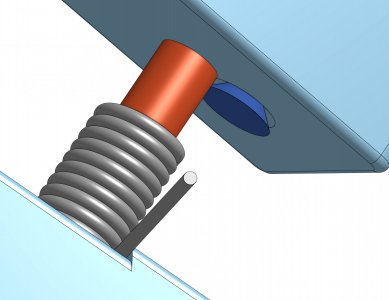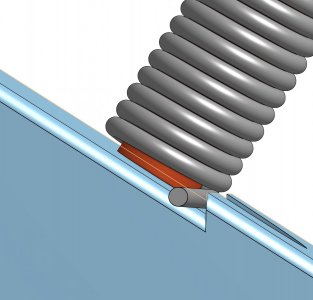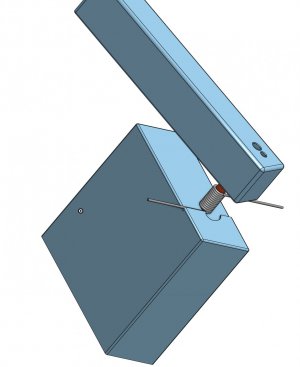- Joined
- Jul 28, 2017
- Messages
- 2,384
For various reasons I may find it necessary to make a small spring to repair the latch mechanism in our sliding patio door. The spring is a little unusual, with one end having an extended hook but not the other. I haven't found an off-the-shelf replacement, and the replacement latch I bought turned out not to be compatible. There's some angst there that I won't fully go into here (yet), but it appears that the manufacturer wanted to capture more income by making their latch SLIGHTLY incompatible with generics, and that there latch is no longer available. Kicked to the curb by their nonexistent customer service. Anyway, I discovered the problem was due to that there spring. I tried using a standard spring, but that didn't work -- the extended hook is vital. Springs with that kind of end are not as common, and so far I haven't found one small enough.
I tried removing the strike portion of the latch, thinking that I could put something in there that _is_ compatible with a generic -- but who-ever installed the strike must have used screws that are about a foot long (ok, I exaggerate some) because it's impossible to back them out. Heads stripped in the attempt. Replacing the whole slider because of this F-ed up situation will cost big bucks. OK, cool down...time to make a spring that does the job.
I found this site about making springs. Anyone taken this route? Any words of wisdom? The spring I'm talking about is about .2 inches in diameter so the hazards of making big springs aren't an issue, it's the other things I don't know yet.
I tried removing the strike portion of the latch, thinking that I could put something in there that _is_ compatible with a generic -- but who-ever installed the strike must have used screws that are about a foot long (ok, I exaggerate some) because it's impossible to back them out. Heads stripped in the attempt. Replacing the whole slider because of this F-ed up situation will cost big bucks. OK, cool down...time to make a spring that does the job.
I found this site about making springs. Anyone taken this route? Any words of wisdom? The spring I'm talking about is about .2 inches in diameter so the hazards of making big springs aren't an issue, it's the other things I don't know yet.




